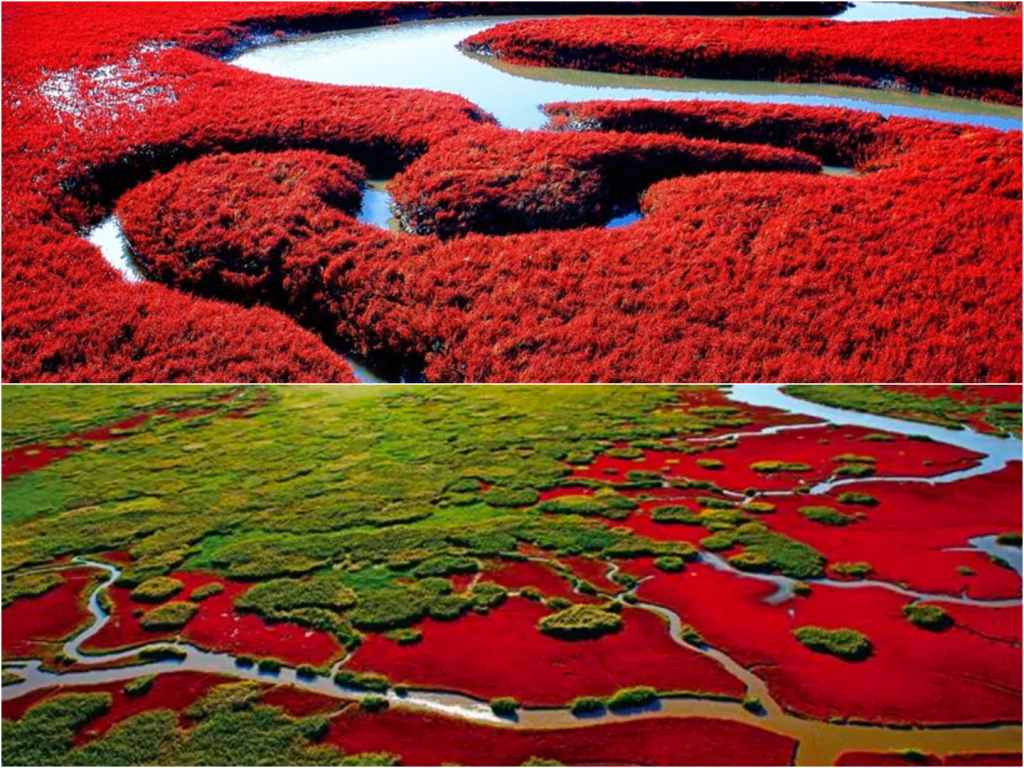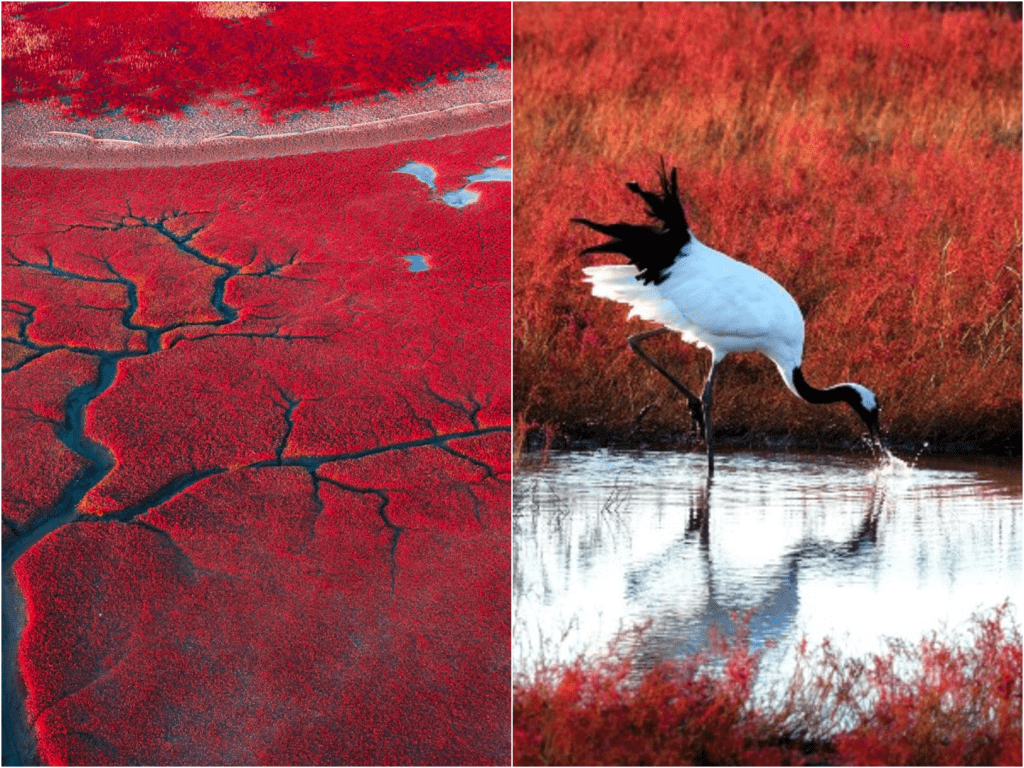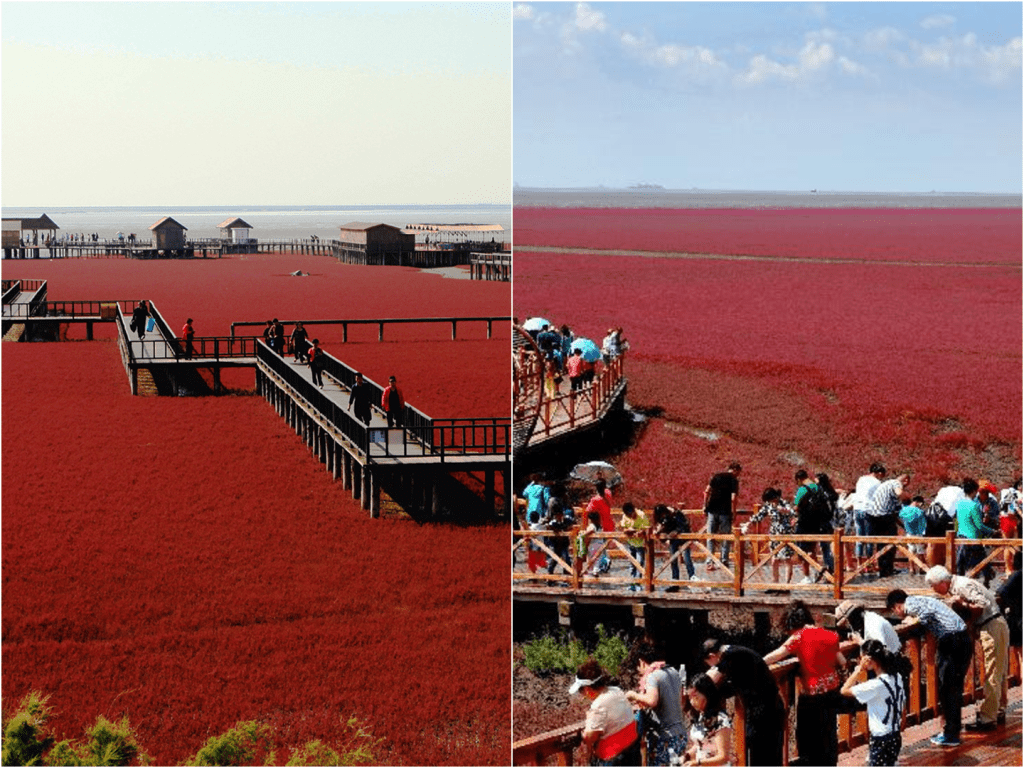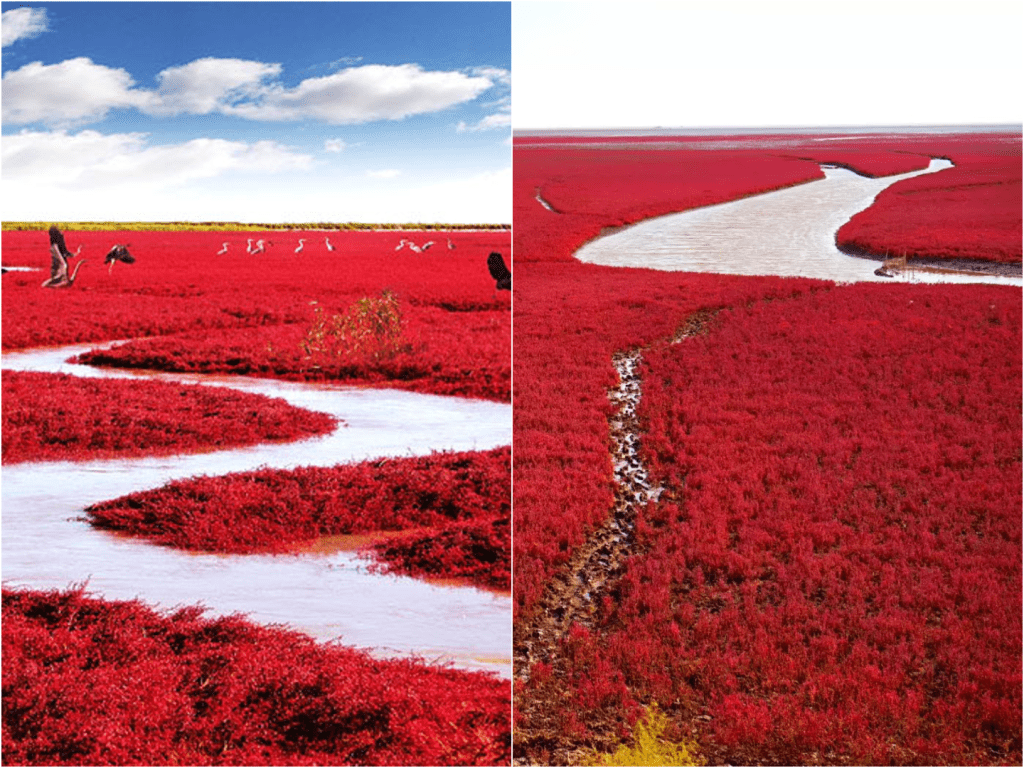The Red Beach of China — A Fire-Colored Sea of Grass That Isn’t Sand at All
I remember scrolling past an image of a shoreline dyed a crimson red and my jaw dropped. I thought it was digitally altered, but this is real. In Liaoning Province’s Panjin, China, a vast wetland turns into a true sea of fire-colored grass every autumn. It’s not sand—it’s a plant called Suaeda salsa, and the sight is magnetic.
When spring arrives, the wetland wears soft green hues. Come summer, it deepens, until by September or October, like clockwork, the plants peak in bright red for weeks. Imagine walking along a raised boardwalk, surrounded by an ocean of scarlet grasses illuminated by sunlight. It feels dreamlike, like stepping into a painting.
The key is that special grass—a salt-tolerant halophyte that thrives in soil too harsh for most plants. Panjin sits in the estuary of the Liaohe River, where saline water meets alkaline soil. That’s perfect habitat for Suaeda salsa, which thrives here and blankets the shoreline for 18 kilometers.

But this place is more than a burst of color. It’s a biodiversity hotspot. Over 260 bird species and nearly 400 animal species call it home. Migratory cranes, black‑beaked gulls, shrimp, crabs, and fish hide among the reeds and grass. It’s a vital stop on Asia–Australia migration routes.
It’s also a protected reserve under Chinese law since 1988. Only a small viewing area is open to tourists, keeping the ecology safe. The grass soaks up heavy metals and enriches soil quality. It’s nature doing its quiet work—filtering water, sheltering creatures, anchoring sediment.

The seasonal transformation is poetic. Mid‑September, you might see flaming red grass stretching farther than the eye can see. A gentle wind turns it into waves, as if the earth is breathing. By October, patches shift to purple before winter’s frost withers them. Children run along boardwalks. Photographers snap endless frames. Birdwatchers whisper among the reeds.
Local guides say morning brings the best light—shadows dance over crimson and gold. Afternoons are perfect for boat rides through channels brushed by red grass. Families pack picnics at tea‑colored pavilions. It feels festive, rooted in seasons both fierce and gentle.
This wetland shows how a fragile ecosystem can shine without being fragile. In Panjin, people safeguard nature: planting grass, creating boardwalks, limiting crowds, rescuing cranes. They’re protecting not just a spectacle, but a swirling tapestry of life—grass, birds, soil, water, air.

Once, a scientist pointed to samples and said microbial life in saline soil here included 13 rare bacteria phyla. That blew my mind. Something so vibrant and colorful, yet feeding unseen communities, working quietly beneath our feet.
When autumn fades, that bright sea disappears, replaced by a quiet marsh. The grasses blacken, the birds move on. But the flood returns next year, reminding me how cycles define nature: growth, red glory, winter rest. It’s not permanent—it’s a promise.
China’s Red Beach isn’t a gimmick. It’s a living ecosystem, an annual miracle, and a culture of care. If you go, walk softly. Respect the boardwalks. Bring binoculars, good light, and a camera, sure, but also slow your pace and let silence seep in. Here, bright color isn’t a show—it’s hope, and roots, and wings.
I haven’t visited yet, but I carry it in my mind: a horizon painted red by grass, alive with birds, thriving where desert salt meets river silt. It reminds me how wild beauty can bloom in salt and soil, how even grass—ordinary grass—can change how we see the world.

Lena Carter is a travel writer and photographer passionate about uncovering the beauty and diversity of the world’s most stunning destinations. With a background in cultural journalism and over five years of experience in travel blogging, she focuses on turning real-world visuals into inspiring stories. Lena believes that every city, village, and natural wonder has a unique story to tell — and she’s here to share it one photo and article at a time.





